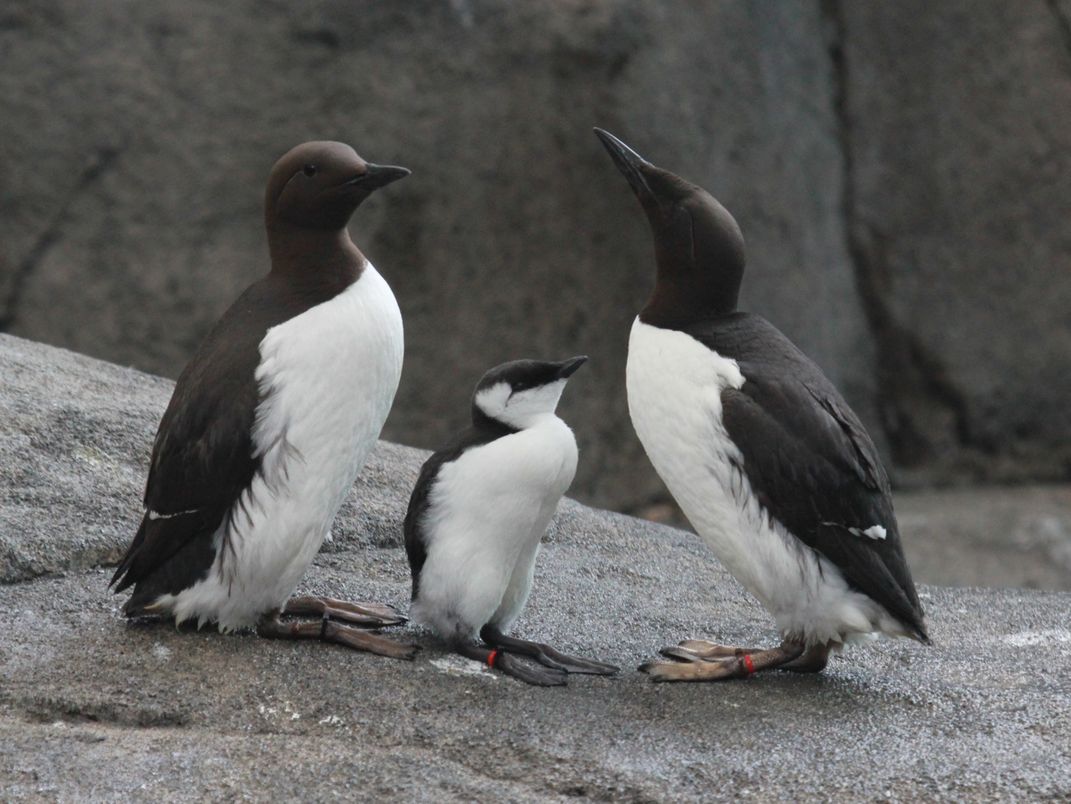Pandemic Reveals Ecological Benefits of Tourists in One Seaside Town
When people stayed home, white-tailed eagles converged on the island of Stora Karlsö in Sweden
/https://tf-cmsv2-smithsonianmag-media.s3.amazonaws.com/filer/6f/02/6f028277-c134-4580-941f-1fbee26d3c7c/jan26_storakarlso.jpg)
Overhunting and egg-harvesting once drove the common murre population on the island of Stora Karlsö down to only 100. But it was declared a nature reserve in the 1880s, and now, about 60,000 of the seabirds live on its rocky cliffs.
Human visitors to the island tried to limit their impact on the environment. But research published in the journal Biological Conservation on January 4 shows that the constant presence of low-profile tourists actually played an important role in the ecosystem’s stability. When tourists stopped visiting the island in 2020 because of the Covid-19 pandemic, their absence set off a chain of events that ended with the common murres hatching 26 percent fewer chicks than they had each year in the decade prior.
“This shows just how impactful our changes in travel have been on entire ecosystems,” says University of Manitoba ecologist Nicola Koper to Cara Giaimo at the New York Times. Koper wasn’t involved in the new research, but adds that it is “fascinating.”
Usually, common murres make their homes on the rocky ledges of Stora Karlsö’s cliffs. They live in dense colonies—the Stora Karlsö colony is the largest population of common murres in the Baltic Sea—and hunt for fish in the ocean. When threatened by large birds of prey, like bald eagles or peregrine falcons, murres fly in wheeling maneuvers in self-defense.

The new research shows that the constant activity of humans touring the island was enough to deter some raptors from swinging by. But in 2020, without human activity to keep them away, dozens of white-tailed eagles swung by to do some hunting of their own.
“They will gather in places where there is a lot of food and little disturbance from people,” says biologist Jonas Hentati-Sundberg of the Swedish University of Agricultural Sciences, the lead author of the new paper, to the New York Times. “This year, this was their hot spot.”
White-tailed eagles don’t hunt common murres. Their diet mostly consists of fish, smaller birds, rabbits and carrion. But the sight of a large raptor swooping through the skies is enough to make hundreds of common murres panic and scatter away from their ledges.
The study shows that from May 1 to June 4, common murres in one area spent about ten hours each day away from their nests. In 2019, birds spent only 72 minutes away from their nests each day.
First, this disrupted the birds’ mating. Then, unattended nests were easy targets for hungry gulls and crows, which eat the murres’ eggs. And sometimes, the murres kicked their eggs off of the ledge in a panic.
“As a conservationist, it’s kind of heartbreaking to see these birds suffer for the first time actually in all the years I’ve been there,” says Hentati-Sundberg, who has studied the Stora Karlsö colony for 19 years, to New Scientist’s Richard Sima.
Between the eggs kicked over the ledge and the others taken by predators, the colony hatched 26 percent fewer chicks than usual, making it the worst breeding season on record, per New Scientist.
The find is a far cry from the scientists’ original concerns when they set out for fieldwork on the island. With travel restrictions in place, the research team was worried about the reduced number of boats ferrying to the island, and the fact that local restaurants would be closed. But the findings are one example of research that can be performed amid the “anthropause,” which scientists recognized last summer as an opportunity to study humans’ impact on wildlife.
“I think this illustrates that we are so deeply embedded in ecological relationships and in ecosystems, and in many, many different ways,” says Hentati-Sundberg to New Scientist. “A much more fruitful [conservation] strategy for the future is to try and to understand what is actually our role… Because stepping back will not solve all our problems.”